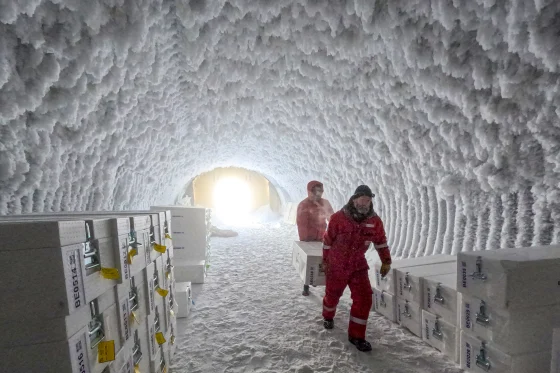Ice Coring in Antarctica: A groundbreaking discovery in climate science has emerged from the frozen expanse of Antarctica, where an international team of researchers has successfully extracted an ice core estimated to be over 1.2 million years old. This achievement involved drilling an impressive 2.8 kilometers into the Antarctic bedrock. The ice core, taken from a site called Little Dome C, is poised to offer invaluable insights into ancient atmospheric conditions and climate shifts, particularly with regard to greenhouse gases.
The Importance of Ice Cores in Climate Science
Ice cores are cylindrical samples of ice extracted from glaciers or ice sheets, containing trapped air bubbles that preserve ancient atmospheric gases. These bubbles provide a detailed record of past climate conditions, allowing scientists to trace changes in the Earth’s climate over vast periods. This new ice core is especially significant, as it extends the historical climate record well beyond the previous limit of 800,000 years, offering a deeper understanding of long-term climate patterns.
European Project for Ice Coring in Antarctica
The Beyond EPICA (European Project for Ice Coring in Antarctica) project is an ambitious international collaboration funded by the European Union, with Italy at the helm and Carlo Barbante leading the research efforts. This project seeks to analyze greenhouse gas levels and other atmospheric changes from the past 1.2 million years. Over the course of four years, the team drilled during Antarctica’s summer months, enduring extreme cold temperatures averaging -35°C.
Preliminary Findings from the Ice Core
Initial analysis of the ice core reveals that levels of greenhouse gases such as carbon dioxide and methane have not exceeded current concentrations during the warmest periods of the past 800,000 years. Remarkably, current carbon dioxide levels are 50% higher than the historical maximum recorded in the core, underscoring the significance of human activity in influencing today’s climate.
The Role of Isotope Analysis in Dating the Core
To determine the age of the ice core, scientists used isotope analysis, which measures the ratio of different isotopes within the ice. This method allowed for precise dating of the core, confirming that the ice is at least 1.2 million years old and providing a crucial reference for future climate research.
Implications for Future Climate Research
The data extracted from this ancient ice core promises to deepen our understanding of how Earth’s climate has evolved over millions of years. It may also offer vital information for predicting future climate changes and assessing the long-term impacts of human-induced climate change. The findings could inform global climate policies and conservation strategies, highlighting the importance of this research for both present and future generations. This remarkable discovery marks a significant step forward in the field of climate science, opening new doors for exploration and further enhancing our comprehension of Earth’s intricate climate system.












